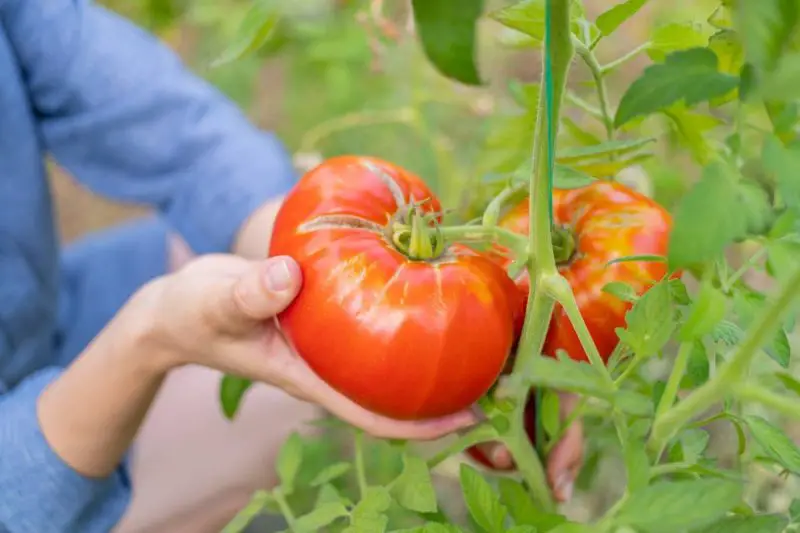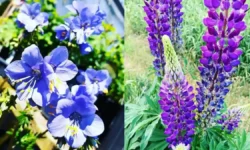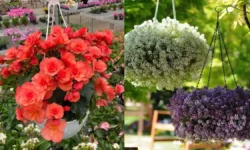Tomatoes go through several stages of ripening before they reach their peak flavor and sweetness. Understanding these stages helps you determine the ideal time to harvest. The ripening process begins when the fruit transitions from a firm, green stage to a softer texture with a hint of color change. During this time, the tomato produces ethylene gas, which triggers the breakdown of chlorophyll and the development of red, yellow, or orange pigments, depending on the variety.
As the tomato ripens, its natural sugars increase, while acidity slightly decreases, creating the perfect balance of sweetness and tanginess. Picking too early can result in a bland, mealy texture, whereas leaving the fruit too long on the vine may cause it to crack or become overripe. Monitoring these changes carefully ensures that you harvest your tomatoes at the peak of their flavor.
Table of Contents
Visual Signs of a Perfectly Ripe Tomato

Color Indicators
Color is one of the most reliable indicators of tomato ripeness. For red tomato varieties, the fruit should have an even, deep red color without any green patches, except for a slight tinge near the stem in some cases. Yellow, orange, and purple varieties should also display their respective mature hues uniformly across the skin. A partially green tomato may still ripen indoors, but it will not develop the same level of sweetness as one ripened fully on the vine.
The transition from green to the final color occurs gradually, and gardeners often notice a “breaker stage,” where the fruit turns from green to a blush of pink, orange, or red. Picking at this stage can still yield good results if the tomatoes are allowed to ripen indoors, but for the sweetest flavor, it is best to wait until the fruit reaches its full, vibrant color while still attached to the plant.
Texture and Firmness
A ripe tomato should feel firm yet slightly soft when gently squeezed. Overly hard tomatoes are likely under-ripe, whereas tomatoes that feel too soft or mushy are past their prime. The ideal texture is one that yields slightly under gentle pressure, indicating the flesh inside is juicy and fully developed. Gardeners often refer to this as the “vine-ripened” feel, which is a reliable sign that the tomato is ready to pick.
Timing Based on Tomato Varieties
Early vs Late-Season Varieties
The timing for harvesting tomatoes also depends on the variety you are growing. Early-season varieties mature faster and are ready to harvest within 50 to 60 days after planting, while late-season varieties can take 80 to 90 days. Early varieties often have smaller fruits that ripen quickly, making them ideal for gardeners who want an early summer harvest. Late-season tomatoes, on the other hand, are usually larger and develop more complex flavors if allowed to mature fully on the vine.
Determinate vs Indeterminate Types
Determinate tomato plants produce fruit that ripens almost simultaneously, making it easier to harvest large batches at once. In contrast, indeterminate varieties continue producing fruit throughout the growing season, requiring regular picking every few days to ensure you catch them at their peak ripeness. Understanding the growth habit of your plant helps you establish a harvesting routine for the freshest results.
Environmental Factors That Affect Harvest Timing
Temperature and Weather Conditions
Temperature plays a significant role in determining when to pick tomatoes. Tomatoes ripen best in temperatures between 70°F and 85°F. When temperatures drop below 60°F or rise above 90°F, ripening slows down, and the flavor may not develop fully. Gardeners in cooler regions sometimes pick tomatoes slightly before full ripeness to protect them from frost, allowing them to finish ripening indoors.
Sunlight Exposure
The amount of sunlight your tomatoes receive directly affects their sugar content and flavor development. Fruits exposed to consistent sunlight tend to ripen faster and taste sweeter. However, excessive direct sunlight can sometimes cause sunscald, a condition where white or yellow patches appear on the fruit’s skin. In such cases, it is better to pick slightly early and allow the fruit to finish ripening indoors.
Picking Tomatoes at the Right Time
Morning vs Afternoon Harvesting
The time of day you harvest can influence the freshness of your tomatoes. Picking tomatoes in the morning, after the dew has dried, helps retain maximum firmness and juiciness. The cooler temperatures at this time prevent the fruit from becoming overly warm, which can sometimes cause it to soften too quickly after harvest. Afternoon harvesting is still acceptable, but morning tends to yield the best post-harvest quality.
Gentle Harvesting Techniques
When harvesting tomatoes, handle them carefully to avoid bruising the skin. A ripe tomato should detach easily from the vine when gently twisted or lifted. If resistance is felt, the fruit may need a little more time to mature. Using clean pruning shears can also help avoid damaging the stem or neighboring fruits.
Should You Ripen Tomatoes on or off the Vine?
Benefits of Vine-Ripened Tomatoes
Tomatoes allowed to ripen fully on the vine generally develop superior flavor and sweetness compared to those picked early. The longer they remain attached, the more sugars they accumulate, resulting in a richer taste. For home gardeners who prioritize flavor, vine-ripening is the best option when weather conditions allow.
Ripening Indoors
There are times when picking tomatoes early and ripening them indoors is necessary. If frost, excessive rain, or pest problems threaten your crop, harvesting at the breaker stage is a practical choice. Tomatoes continue to ripen after being picked because they still produce ethylene gas. Placing them in a warm, well-ventilated area away from direct sunlight helps them ripen evenly. Some gardeners place tomatoes in a paper bag with a ripe banana to speed up the process, as bananas also release ethylene gas.
Storage Tips for Maintaining Freshness
Ideal Storage Conditions
Once harvested, tomatoes should be stored at room temperature until fully ripe. Refrigeration should be avoided unless the tomatoes are very ripe and need to be preserved for a longer period. Cold temperatures can dull the flavor and change the texture, making the fruit mealy. Keeping ripe tomatoes in a single layer, stem side down, on a countertop or in a shallow bowl prevents bruising and allows for even airflow.
How Long Can Harvested Tomatoes Last?
Freshly harvested vine-ripened tomatoes typically last for five to seven days at room temperature, depending on their ripeness level. Tomatoes harvested slightly early and ripened indoors may last a bit longer because they continue their ripening process gradually. Always check for soft spots or wrinkles, as these indicate that the tomato should be used immediately to enjoy its best flavor.
Common Mistakes to Avoid When Harvesting Tomatoes
Picking Too Early
Harvesting tomatoes too early, especially when they are still completely green, often results in a bland, underdeveloped flavor. Although green tomatoes can ripen indoors, they rarely achieve the same sweetness as those ripened on the vine.
Leaving Tomatoes Too Long on the Vine
On the other hand, leaving tomatoes too long on the vine can lead to overripeness, cracking, or pest damage. Overripe tomatoes may become mushy, losing their firm texture and fresh taste. Checking your plants daily during peak harvest season ensures you catch tomatoes at their ideal stage.
FAQs about When to Pick Tomatoes
How do you know when tomatoes are ready to pick?
Tomatoes are ready to pick when they show full, even color for their variety, feel slightly soft to the touch, and detach easily from the vine with a gentle twist.
Is it better to pick tomatoes early or let them ripen on the vine?
For the sweetest flavor, letting tomatoes ripen on the vine is best. However, if frost, pests, or excessive rain threaten your crop, picking slightly early and ripening indoors is a good alternative.
Can tomatoes ripen after being picked?
Yes, tomatoes continue to ripen after being harvested because they produce ethylene gas. Keep them at room temperature, away from direct sunlight, until they reach full color and softness.
What time of day is best to harvest tomatoes?
The best time to harvest tomatoes is in the morning after the dew has dried. Cooler morning temperatures help retain maximum juiciness and prevent the fruit from softening too quickly.
How long do freshly picked tomatoes last?
Freshly picked tomatoes can last five to seven days at room temperature. For best flavor, avoid refrigeration unless the tomatoes are fully ripe and you need to store them longer.
Final Thoughts on Harvesting for Maximum Flavor
Picking tomatoes at the right time is both an art and a science. Observing color, texture, and growth patterns is essential to ensure that you enjoy the sweetest, freshest harvest. Factors such as variety, temperature, and sunlight exposure also influence when to pick. For the best flavor, allow tomatoes to ripen fully on the vine whenever possible, but do not hesitate to pick them slightly early if weather or pest issues pose a threat.
By understanding the ripening process and adopting proper harvesting techniques, you can enjoy a steady supply of juicy, sweet tomatoes throughout the growing season. Every bite of a perfectly ripened homegrown tomato is a reward for careful attention and patience in the garden.






